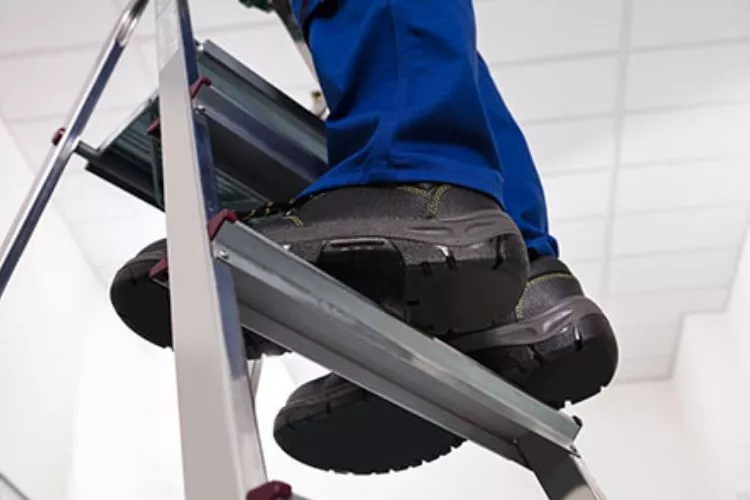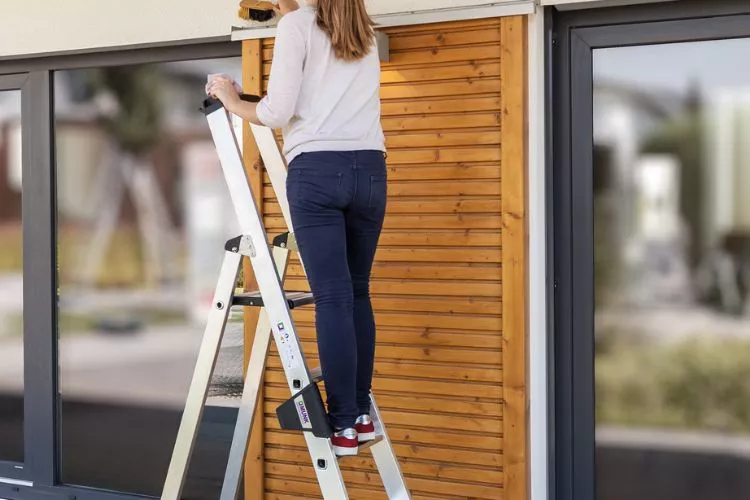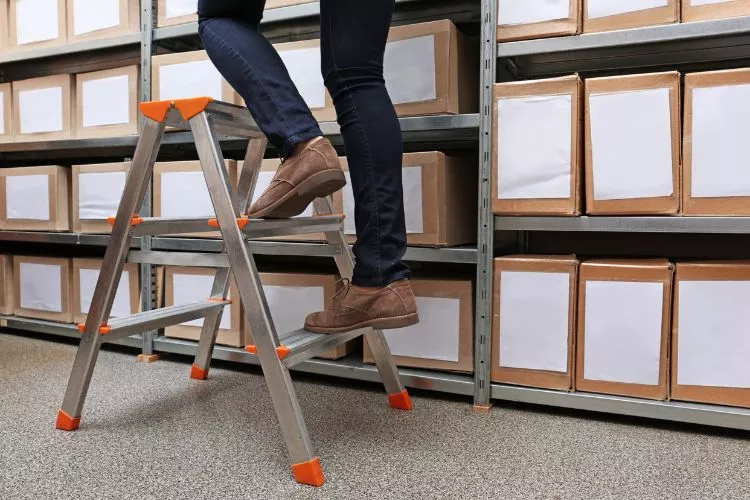Step ladders are commonly used for various tasks that require reaching heights safely and comfortably. When using a step ladder, one important aspect to consider is whether or not it needs to be footed. So, after all, do step ladders need to be footed?

In this article, we will explore the significance of footings for step ladders, their benefits, when they are necessary, how to choose the right footings, and provide tips for installation. By understanding the importance of footings, you can ensure a safer and more stable climbing experience.
Do Step Ladders Need To Be Footed?
Yes, step ladders need to be footed. Footings provide added stability and prevent accidents while climbing. They come in various types, such as rubber caps, non-slip pads, and adjustable footings, and are designed to enhance ladder safety.
Footings greatly improve stability and balance, reducing the risk of accidents and falls. They provide a secure grip on the floor or surface, preventing the ladder from slipping or skidding. Footings also protect delicate flooring or surfaces from damage caused by the ladder’s weight or movement.
The need for footings on a step ladder depends on several factors, such as the type of surface or flooring where the ladder will be used. Choosing the appropriate footings, installing them correctly, and regularly inspecting them are key steps in ensuring ladder safety.
Benefits of Footings in Step Ladders
The use of footings on step ladders offers several benefits. First and foremost, footings greatly improve stability and balance, reducing the risk of accidents and falls. They provide a secure grip on the floor or surface, preventing the ladder from slipping or skidding.
Footings also help protect delicate flooring or surfaces from damage caused by the ladder’s weight or movement. By reducing wear and tear on the ladder legs, footings contribute to its overall lifespan.
When are Footings Necessary for Step Ladders?
The need for footings on a step ladder depends on several factors. One crucial consideration is the type of surface or flooring where the ladder will be used.

Uneven, slippery, or delicate surfaces such as tiles, hardwood floors, or polished concrete often require footings for added stability and protection. In contrast, step ladders used on outdoor surfaces like concrete or gravel may not require footings due to their inherently stable nature.
How to Choose the Right Footings for Step Ladders?
Choosing the appropriate footings for your step ladder is essential to ensure optimal safety and performance. To begin, consider the weight-bearing capacity of your ladder.
Footings should be capable of supporting the ladder’s maximum load without compromising stability. Evaluate the condition of the surfaces or flooring where the ladder will be used. If the surface is smooth or prone to slipping, consider using footings with strong non-slip properties.
Additionally, take into account the intended use and the environment in which the ladder will be used. For instance, if the ladder will be frequently exposed to moisture or chemicals, select footings that are resistant to these elements.
Finally, ensure that the footings fit properly and are compatible with the ladder legs.
Installing Footings on Step Ladders
Proper installation of footings is crucial for their effectiveness. Begin by removing any existing footings and clean the ladder legs thoroughly. Follow the manufacturer’s instructions for installing the chosen footings.
Ensure that the footings are aligned and securely fitted onto the ladder legs. Double-check the tightness to avoid any wobbling or looseness. It is also important to inspect the footings regularly and replace them if they show signs of wear or damage.
You may also find useful: Best Step Ladder For Elderly
What are the rules of using a step ladder?
Using a step ladder safely is essential to prevent accidents and injuries. Below are some important rules to follow when using a step ladder:

1. Choose the right ladder:
Select a step ladder that is appropriate for the task at hand. Consider the height you need to reach and the weight it needs to support. Ensure that the ladder is in good condition and free from any defects or damages.
2. Set up on a stable surface:
Place the ladder on a solid and level surface. Avoid uneven or slippery areas that could compromise stability. If necessary, use leveling devices or footings to provide additional stability and prevent slippage.
3. Follow the weight capacity:
Every ladder has a maximum weight capacity indicated by the manufacturer. Do not exceed this limit to maintain the ladder’s stability and prevent structural failure.
4. Inspect before use:
Before climbing the ladder, inspect it for any visible defects, such as loose screws, damaged rungs, or cracked components. If any issues are found, do not use the ladder and report it for repair or replacement.
5. Positioning:
When climbing the ladder, always face it and maintain a firm grip on the side rails. Keep your body centered and avoid leaning or overreaching to maintain balance. Do not stand on the top cap or the pail shelf of the ladder.
6. Maintain three points of contact:
To ensure stability, always maintain three points of contact with the ladder while climbing, such as two feet and one hand or two hands and one foot. This helps prevent falls caused by imbalance.
7. Don’t overreach:
Avoid leaning or stretching too far to one side while on the ladder. It is best to keep your center of gravity within the ladder’s side rails to maintain stability.
8. Use tools and equipment properly:
If using tools or equipment while on the ladder, ensure that they are securely fastened or held in a way that does not compromise stability or cause you to lose balance.

9. Ascend and descend carefully:
When climbing up or down the ladder, do so slowly and cautiously. Use the ladder’s rungs or steps, not the side rails, for stability. Keep your body centered and face forward at all times.
10. Do not leave unattended:
Never leave a step ladder unattended, especially if it is in an area accessible to others. Ensure that the ladder is properly stored after use to prevent accidents.
Following these rules when using a step ladder will help ensure your safety and minimize the risk of accidents or injuries. Always prioritize caution, stability, and proper usage.
If you are not clear what you should use: Step Stool vs Step Ladder
Frequently Asked Questions (FAQs)
What are the consequences of using a step ladder without footings?
Using a step ladder without footings can lead to instability and an increased risk of accidents. The ladder may slip or skid, causing falls that can result in injuries.
How often should I inspect and replace the footings on my step ladder?
Regularly inspecting the footings is recommended to ensure their integrity. If you notice signs of wear, such as cracks or loss of grip, it is advisable to replace the footings promptly.
Can I use aftermarket footings on my existing step ladder?
Yes, you can use aftermarket footings as long as they are compatible with your ladder both in terms of size and functionality. Ensure that the footings meet safety standards and provide the necessary stability.
Are footings necessary for all types of step ladders?
Footings are generally recommended for most types of step ladders. However, specific ladder designs or surfaces may not require footings due to their inherent stability.
Are footings required by law for step ladders in certain industries?
The requirement for footings on step ladders may vary depending on local regulations and safety standards. It is essential to familiarize yourself with the specific requirements in your industry or region.
Conclusion:
Footings play a significant role in enhancing the stability and safety of step ladders. By providing improved balance, preventing slipping, and protecting surfaces, footings contribute to a safer climbing experience.
Choosing the right footings, installing them correctly, and regularly inspecting them are key steps in ensuring ladder safety. Remember to prioritize stability and protection while using step ladders to avoid accidents and injuries.


